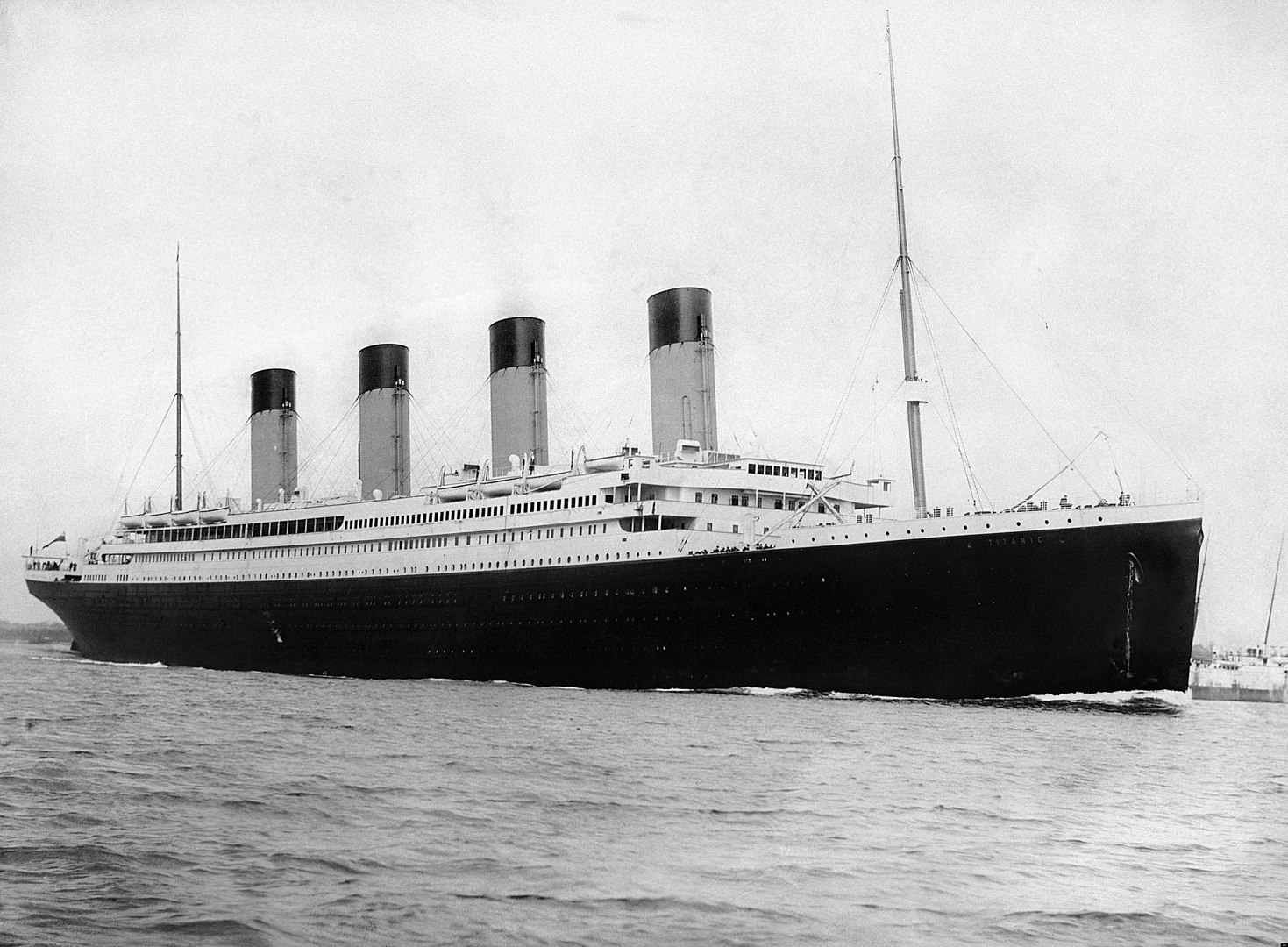On the evening of April 14, 1912, the RMS Titanic, a British passenger liner, collided with an iceberg and sank in the North Atlantic Ocean, hundreds of miles from the shore of Newfoundland. The Titanic was the largest ship ever built, measuring 265 meters in length and traveling at a speed of 22 knots despite weighing 46,000 tons. It belonged to the British transatlantic company, White Star Line. The century that followed the most renowned maritime disaster in history was rich with literary and cinematic depictions of the disaster. The discovery of the shipwreck on September 1, 1985, would reignite interest in the Titanic’s backstory.
- The history of the birth of the Titanic
- A colossus with feet of clay
- The Titanic: A real floating city
- The iceberg incident
- The Titanic is sinking
- The long sinking of the Titanic
- Calls for help
- A greeting that does not come
- The end of the Titanic and the beginning of a legend
- The rescue of the shipwrecked Titanic
- Investigating a tragedy
- Aftermath of the Titanic disaster
- Maritime safety is in question
The history of the birth of the Titanic
William Pirrie, director of the Harland & Wolff shipyards in Belfast, Ireland, dreamed of the Titanic five years before it was built. After working with the White Star Line for some years, Pirrie suggested a new kind of transatlantic ship to the company’s director, James Bruce Ismay. In the early 20th century, emigration to the Americas was at an all-time high, creating intense rivalry for passage on the lines servicing New York, the sole port of entry for individuals seeking to permanently relocate to the United States. Airlines from the United Kingdom, Germany, and France were competing to transport customers to the New World at the lowest possible price.
The quest for extreme size was a theme in this contest. At a time when steam boilers used a lot of coal, it made sense to construct larger ships so that more people could go on each voyage. Additionally, larger sizes meant higher levels of security. Large modern steel ships might be partitioned into watertight bulkheads that would keep them afloat if water were to enter the ship. Finally, the enormous ships’ ample room allowed for the installation of lavish amenities, which attracted affluent customers: the European and American aristocracy that often traveled between continents for business and pleasure.
When Pirrie presented his idea to Ismay in 1907, it was novel because it put efficiency first. White Star prioritized passenger comfort in an era when competitors sought to be the fastest liner and win the “Blue Ribbon,” a prize granted to the ship with the quickest North Atlantic passage.
Passengers of all socioeconomic backgrounds would be able to affordably and comfortably make the journey across. The wealthiest individuals would experience a level of extravagance never before seen on the surface of the planet. Taking this into account, safety would have to be the first priority. Harland & Wolff’s engineers were not instructed to create an unsinkable vessel; that would be arrogant. However, the construction of the future gigantic White Star ships would need to be such that they could withstand the most severe damage expected to be faced at sea.
With little difficulty, Pirrie won over Ismay and White Star’s largest shareholder, the American John Pierpont Morgan, who agreed to back a fleet of three ships that he dubbed the “Olympic, Titanic, and Gigantic.” These massive vessels were 269 meters in length, 28 meters in width, 53 meters in height, and 10.5 meters in depth. With 29 boilers powering two steam engines and a low-pressure turbine that together provide a maximum power of 59,000 horsepower and three propellers that together weigh almost one hundred tons, these 52,000-ton monsters would be able to reach 24 knots (nearly 45 km/h).
The combined capacity of all three ships for passengers and crew on a single journey is over 2,500. The price per unit is $7.5 million.
The Olympic, the series’ forefather, debuted in December 1908. In the immediate aftermath of its launch over two years later, it became apparent that the massive size of its design had led to collateral consequences that the engineers who created it, Alexander Carlisle and his assistant Thomas Andrews, had not expected. The Olympic’s hull slammed into a wharf after being swept away by the waves. Soon after her completion in May 1911, she was engaged in a collision with the Royal Navy’s HMS Hawke, a protected cruiser, in the Spithead Channel near Southampton.
While there were no injuries, the event was contentious since the Admiralty believed that the cruiser’s proximity to the liner was caused by the latter’s massive displacement in the small strait. Although the Olympic sustained less damage, the Hawke sustained more (her bow was entirely shattered), thus the liner was transported to Belfast for repairs.
A colossus with feet of clay

The construction of her sister ship, the Titanic, began on March 31, 1909, and ended on May 31, 1911, more than two years later. She was the biggest ship in the world since she was slightly bigger than her predecessor. The following October, the accident between the Hawke and the Olympic stalled completion of the liner since the dry dock in which the Titanic was being assembled had to be removed for repairs.
Again, in March of 1912, this would happen when a propeller blade broke off the Olympic. As a result of these difficulties, the White Star Line had to delay the launch of the Titanic by three weeks, from March 20 to April 10, 1912. After exactly three years of construction, the Titanic was finally ready to begin her sea trials. These were condensed into a single day, April 2, and held that day. In today’s world, it’s hard to see a ship being given the green light after such a fast check if the lives of 3,500 people rely on it. It was the rules that were in place at the time that were at fault. The official from the Department of Commerce just evaluated the Titanic for its basic seaworthiness and found it to be stable and comfortable, as required by law. For a ship of its size, the turn radius of just under a kilometer and the stopping distance of just under the same distance were both deemed fairly adequate.
The Titanic had a total of twenty lifeboats with a combined capacity of 1,178 people, but this was the information that had become the most well-known. However, a law enacted when very few lines exceeded this tonnage and that has not been changed since set the minimum number of lifeboats for ships over 10,000 tons at 16. While it carried 25% more boats than were required by law, the Titanic was notably lacking in lifesaving equipment.
In fact, the ship’s davits could hold four lifeboats at once, which was why engineer Carlisle recommended increasing the number of lifeboats from two to eight during construction. It was feared that the plan might backfire and reduce passengers’ trust in the vessel. It remained a dead letter.
As a result, it was no sweat to give the Titanic the green light to start carrying paying customers by that evening. Because she was approved for both passenger and mail operations, she was given the prefix RMS, which stands for “Royal Mail Ship.” Though the correct number of lifeboats were on board, the new ship had its flaws. It was difficult to steer the ship because of the tiny size of the rudder, and it also required careful balancing of the speeds of the three propellers. Furthermore, a propulsion reverser in the motors was not deemed essential. This device would have stopped the ship in an emergency by obstructing the propellers, allowing for a quick turnaround from forward to reverse. The propellers on the Titanic lacked such a mechanism and rotated freely.
Also, one of the coal bunkers was on fire, and the department’s representative had no idea. This was normal at the time since coal dust was so combustible, but it might have compromised the integrity of the bulkheads (15 in total) that kept the water out. As a result of the latter, the ship’s hull was split into sixteen sections. If one of them developed a leak, it could be sealed up and the remainder of the ship spared from water damage. The safety of the ship relied heavily on these bulkheads.
Even with a fifth of her length submerged, Engineer Andrews determined that the Titanic could still float. The coal bunker fire was put out without damaging the ship’s bulkhead. It burned for 10 days, confined or not, without anybody on board seeing a thing.
The Titanic: A real floating city
A liner that causes a sensation
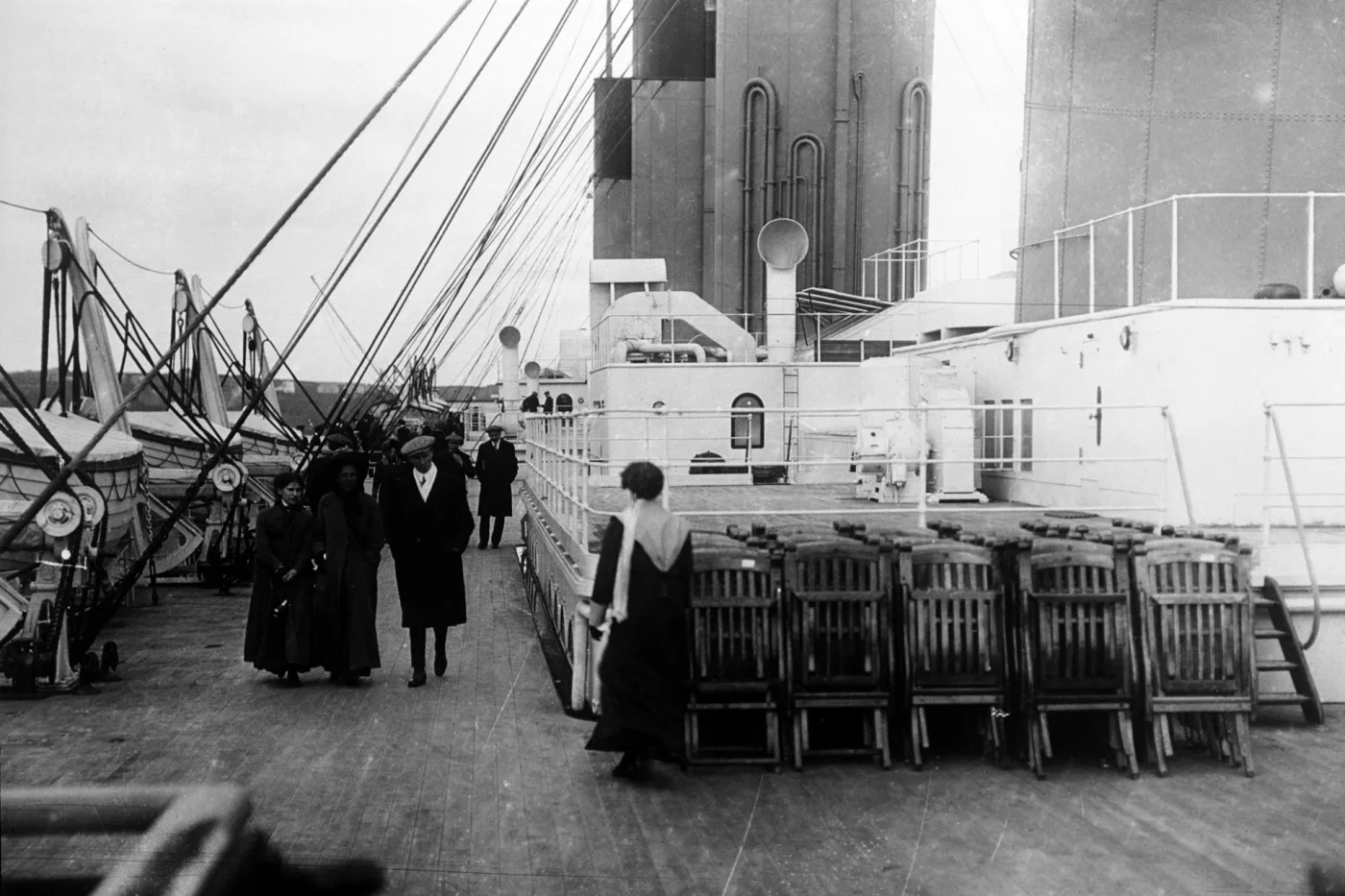
The Titanic sailed for Southampton as soon as she was given the all-clear. White Star’s ships called Liverpool home, but the city’s docks couldn’t handle the Olympic-class vessels. The company’s top captain, Edward Smith, was given command of the Titanic on her first trip. This officer of the Royal Naval Reserve, who as such had the privilege of sailing under the blue flag of this corps rather than the usual red flag of the merchant navy, was making his last crossing before retirement.
Henry Wilde served as Captain Smith’s second-in-command, and he was aided by William Murdoch, Charles Lightholler, Herbert Pitman, Joseph Boxhall, Harold Lowe, and James Moody, in that order. Hugh McElroy was in charge of the finances as the purser. Bruce Ismay, as usual, and Thomas Andrews, the new Chief Engineer of Harland & Wolff Shipyards who replaced the recently retired Carlisle, would be on board.
The ship made waves at Southampton. Whatever her flaws may have been, the Titanic was a beautiful vessel. Her symmetrical composition and minimal ornamentation won praise at the time and continue to do so now. There was a reason for a fourth chimney to be built. Even more so, it serves no other function than this one; The first three chimneys were used to vent the machines’ exhaust; the fourth chimney had no functional use and was added for aesthetics.
All attention was focused on finishing touches during the week after the commissioning. With around six thousand tons of coal, the facility was refueled. Since the ship used sixty tons of fuel each day for lighting and heating merely by sitting at the wharf, this was essential. There were also a few thousand cigars for the well-heeled, in addition to the hundreds of tons of food and approximately forty thousand bottles of alcoholic and non-alcoholic drinks.
A miniature society
The degree to which the distribution of passengers and staff mirrored the socioeconomic stratification of the era had been stressed by several scholars. 73 years later, when Robert D. Ballard discovered the Titanic’s ruin, he likened the ship to a “floating mille-feuilles.” The Belle Époque aristocracy, who rode first class, supplied the cherry on top. In the salons of the palaces they visited in Paris, London, Nice, and New York, businessmen, industrialists, politicians, and nobles enjoyed unrivaled luxury.
The employees at Harland & Wolff earned the equivalent of $20 per month, but they shared luxurious cabins and suites that cost up to $4,500. Some first-class staterooms even had their own promenade deck, which was located on the ship’s uppermost deck.
However, the $125 first-class accommodations cater primarily to the privileged. This allowed them to be within reach of the more prosperous sections of the middle class. Other passengers traveled at a cost of $65 per person in second class. It was clear that the ship’s capacity of 905 first-class passengers, 1,130 third-class passengers, and 565 second-class passengers showed that this group of affluent consumers was still in the minority.
While the wealthy classes could afford to take a vacation at sea, the working class was forced to live in the ship’s bowels and navigate a confusing network of passageways just to get to the top deck. Third-class passengers, on the other hand, were often there because they had no choice. Many people had just enough money for a one-way ticket to America, the place of their dreams, despite the fact that just getting there had required years of saving and toil.
A poorly packaged crew

The situation was hardly the worst, however. Even in the lowest class, the Titanic provided an unprecedented degree of luxury for her passengers. On-board meals were provided, but guests on many other vessels were required to provide their own food.
The dorms were upgraded with actual beds rather than the standard bunks, and the fortunate few may stay in a genuine cabin for just $40. Stewards, cleaners, servers, and chefs worked around the clock for frequently little pay to provide service to both establishments.
It’s possible they made it to the morning after. Not so for the drivers, though, who were trapped in what amounted to a physical hell on earth: the engine room. The stokers, who were the lowest class in this little civilization, lived and worked quite similarly to the miners.
A ship deemed unsinkable
The company made sure its customers were as relaxed as they could be given the possibility of sinking, and the comforts they provided helped relieve the anxiety that many 21st-century air passengers feel. The Titanic’s reassuring design elements were her elegant appearance, a double hull constructed from the highest-quality steel, and bulletproof bulkheads.
Even if it did sink, it wouldn’t happen in the next five minutes, which was a very low probability. On this very busy North Atlantic route, help might be obtained quite quickly, especially if the ship was equipped with cutting-edge radio technology. When the dust settled, the figures spoke for themselves. Shipwrecks in the North Atlantic have claimed the lives of 1,126 people during the last 30 years, but just 57 in the preceding decade.
On the other hand, statistics should be seen as data and not proof. Unfortunately, nobody in April 1912 seemed to be concerned.
The major departure finally happened on April 10, 1912, at lunchtime, after a little delay. In a blaze of brilliance, the Titanic set sail from Southampton with decorations along the whole length of the ship. But the trip was in danger of being cut short. Moments later, the New York’s moorings broke as she was pulled in by the giant’s displaced hull. Obviously, Captain Smith had to start the propellers to avoid a collision. Concerned travelers on both vessels saw this terrifying near-miss, and it was recorded on film.
The maiden voyage
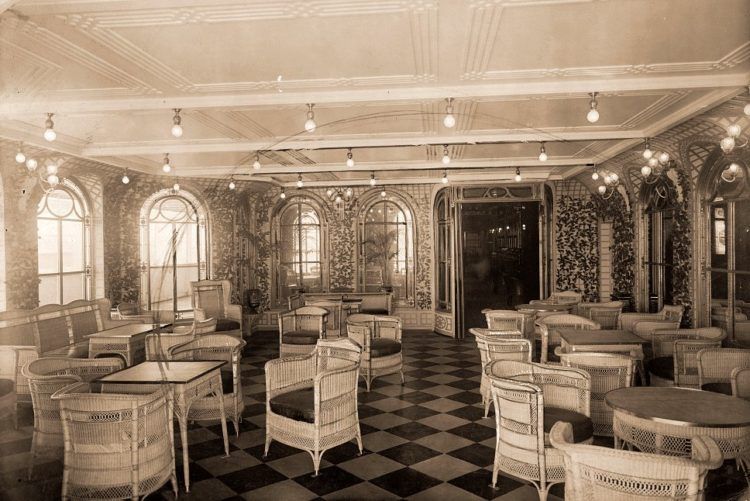
The ship’s abundant buffet helped passengers of all socioeconomic backgrounds get over their first shock and despair. The voyage to Cherbourg, France, only took a few hours. Since the Olympic class had to stay in the deep waters of the Normandy port owing to its deep draft, this was a significant stop for the company. Two ferries were built expressly for the class. A few hundred passengers were picked up by a special train leased by White Star, and the ship left France just after 8 o’clock that evening.
The Titanic sailed into the Irish Sea and docked late the next morning in front of Queenstown, now called Cobh, on the country’s southwestern coast. She was on her way to New York from here, her final destination. In a span of around two hours, everyone on board boarded and got off. Arrival in New York was scheduled for 10 a.m. on April 17, and departure on the return trip was scheduled for April 20. The official ship manifest listed 2,208 passengers and crew members on board.
But the actual number of people on board the ship varied greatly depending on the source and other considerations such as the status of the individuals mentioned (some members of the ship’s crew were categorized as passengers), cancellations, and other last-minute alterations. According to Gérard Jaeger’s calculations, there were a total of 1,324 passengers (329 in first class, 285 in second, and 710 in third), as well as 899 crew members.
At first light, it was obvious that whatever had happened throughout the night to lower the ship’s temperature had been effective. Winter 1912 was generally considered to be one of the mildest on record. Due to the early spring, the Arctic pack ice began melting sooner than usual. The cold Labrador Current pushed this ice southward, which consisted of icebergs and icicles broken off from Greenland’s huge glaciers.
As far as their little stature would have carried them, they ventured before the warmer Gulf Stream waters dissolved them. By doing so, they put at risk shipping on both the American and European sides of the Atlantic Ocean, from New York to Western Europe. Steel hulls and later radio telegraphy helped mitigate the effects of ice floes.
In the late evening of April 12, the Titanic began receiving the first telegraphed warnings from other vessels. A sizable ice field was mentioned as something they came upon. The crew of the Titanic paid little heed to the warnings that this was an abnormal occurrence so early in the year. The ship’s radio malfunctioned throughout the night, so it couldn’t even relay the warnings. Repairing it took six hours.
This led to a huge number of personal telegrams being added to the stack of unsent correspondence. The ship’s radio operators reported to the Marconi Company and not to White Star. Prioritizing the transmission of the signals for which they were compensated meant that certain warnings from other ships were either not transcribed or not sent to the bridge.
The iceberg incident
Uncertain weather
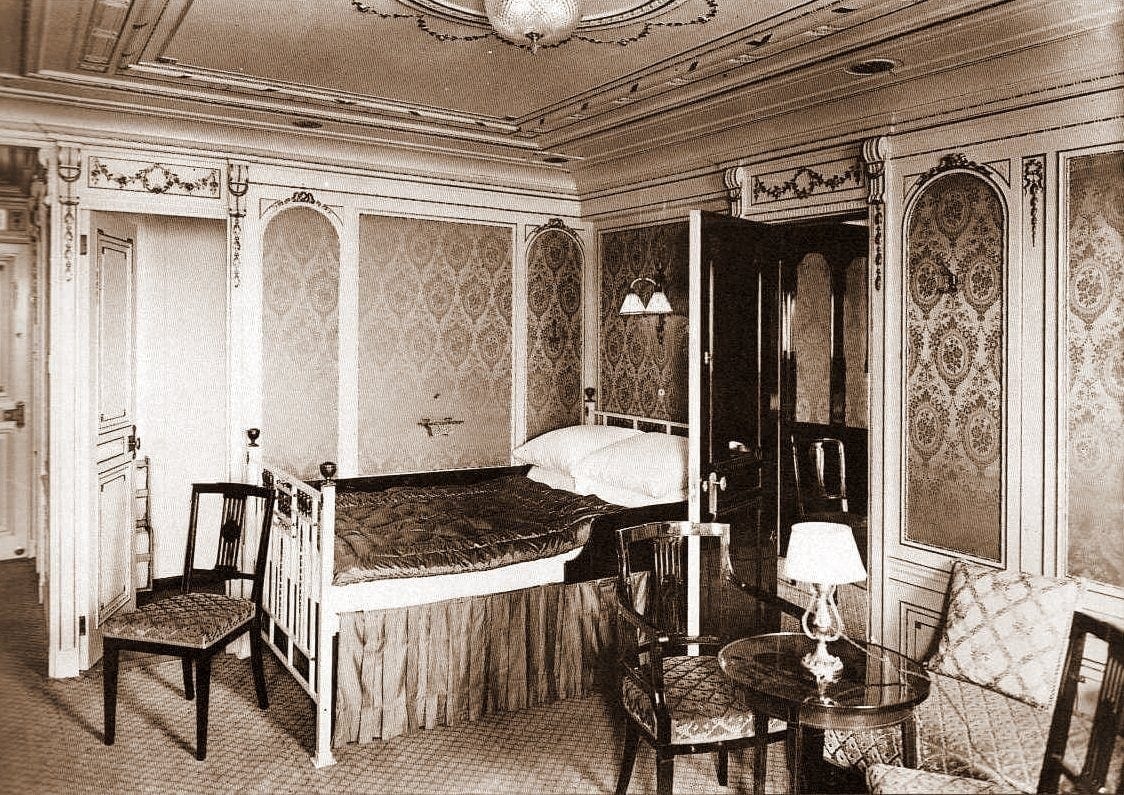
The temperature plummeted again that evening of April 13, signaling the arrival of the ice. The Titanic would go farther south than usual since Captain Smith elected to turn later than usual in the direction of New York. This safety measure demonstrates that the cautions of previous vessels were not fully disregarded.
This, however, was the extent of the measures taken, and the path remained unchanged. Saturday, April 13, and Sunday, April 14, 1912, went off without a hitch for the travelers, other than prompting them to dress warmer. Some eyewitnesses said that Bruce Ismay pushed the captain to do speed tests, an allegation that Ismay subsequently vehemently refuted.
The officers who took over the watch, though, started to become nervous. First Officer Murdoch shut the front hatch as darkness fell so that the light from outside would not blind the watchers stationed in the crow’s nest atop the mast. Second Officer Lightholler subsequently noted that the air temperature had plummeted to zero degrees Celsius, which might freeze the water supply.
However, despite the chilly temperature, the weather was beautiful, with a very tranquil sea and a clear sky. Only drawback: it was the new moon, and the luminosity was thus extremely weak. At 10 o’clock at night, Frederick Fleet and Reginald Lee climbed into the crow’s nest, where they had to keep a watchful eye out for any potential threats.
Sightseeing among the icebergs
The two men do not have binoculars. The importance of this absence on the result of the race had been significantly exaggerated, despite the fact that it was likely due to an oversight at the start of the race in Southampton. The lookouts had the worst conceivable circumstances to observe an iceberg that evening. No swell was there to skim the waves that would break at their base, and just the faint moonlight reflected off the ice.
It’s possible that Fleet and Lee were dealing with exacerbating circumstances. Even though icebergs have an estimated 80% of their bulk underwater, the continual erosion caused by the warmer sea water causes their center of gravity to rise. Eventually, the iceberg tipped over, revealing a side that was no longer white but transparent and polished by erosion, which reflected considerably less light.
That the iceberg presented this aspect, and the chances of detecting it sufficiently in advance were slim. A dark iceberg might have been the doom that sank the ship. Based on the study of marine currents, the researchers theorized that it would have come from the Jakobshavn fjord, where coal seams outcrop under the glaciers. Black icebergs were born from these glaciers. There was no assurance that the binoculars would have made a difference under such circumstances. Using them would have necessitated a reduction in the lookouts’ field of view since the increased magnification resulted in a correspondingly reduced viewing angle. They may have backfired by making it more likely that the iceberg would go unnoticed.
Suddenly, a threatening shadow
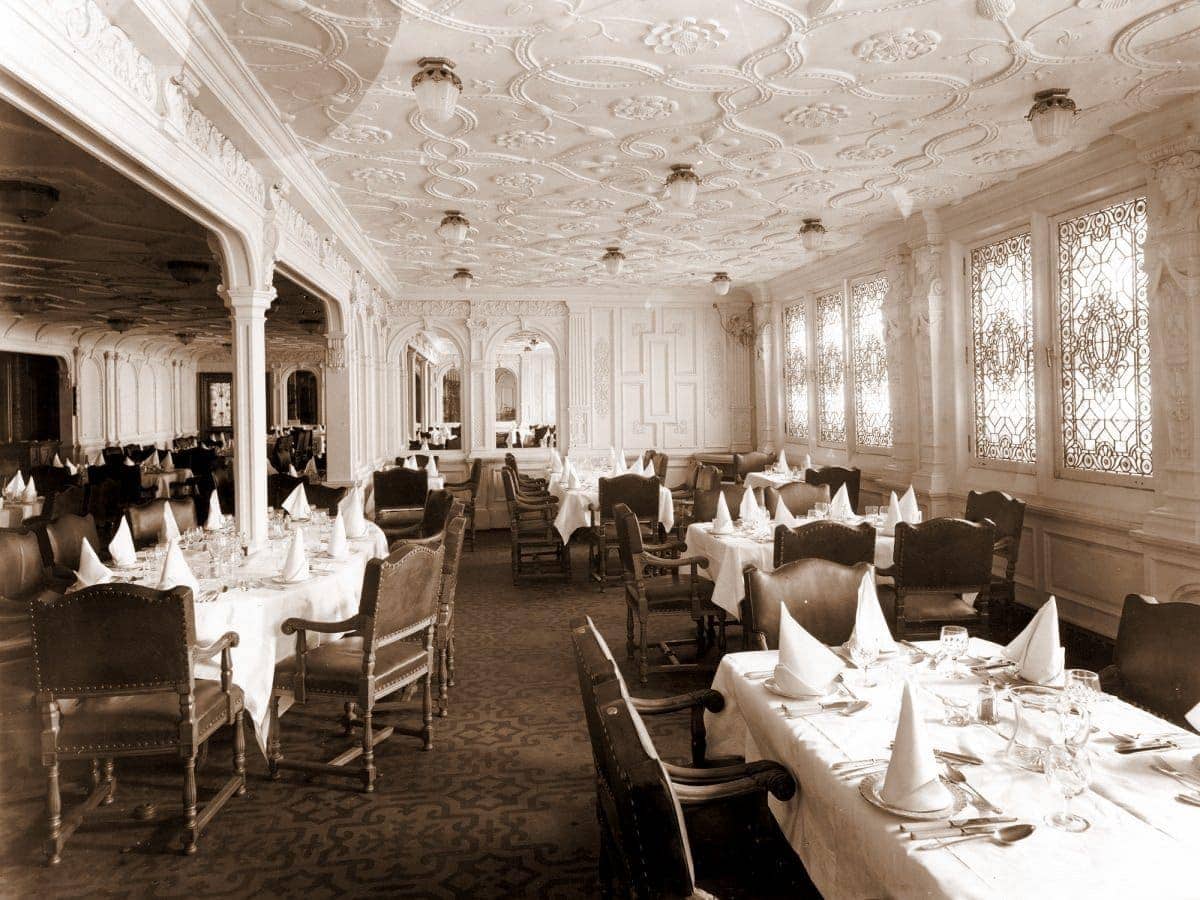
Despite the cold wind that stung his cheeks, at 11:39 p.m., Fleet noticed something: a bulk that stuck out from the darkness, maybe 500 meters in front of the Titanic. The iceberg! There’s an emergency, so he dials the bridge phone and alerts Moody, the sixth officer. Murdoch was the senior officer on the bridge, and his actions are still being debated today. Putting the wheel to starboard, or to the right, was almost certainly the initial directive.
A ship’s controls, however, was backwards from those on land; therefore, this action would cause the vessel to go left (to port). Even though the switch from port to starboard controls didn’t happen until after the ship sank, Charles Lightholler’s daughter later claimed that Murdoch was to blame. This theory, however, was debunked as it was established by survivors of the incident that Murdoch had planned to sail around the iceberg to the port, proving the validity of his instructions.
Engine orders were also a source of contention. As stated by many witnesses, Murdoch either ordered “full astern” or just cut the power. Whatever the reason, the general consensus was that this was a bad idea. Eddies were formed by the Titanic’s propellers because they could not be stopped quickly enough without a reversing gear.
Cavitation was a phenomenon that lessened or eliminated the rudder’s efficiency, which was especially true of the Titanic due to her relatively tiny rudder. Unless, of course, one accepts Jim Currie’s contention that the time between the iceberg sighting and the impact was just six seconds rather than the thirty-seven seconds commonly accepted.
A shock that goes almost unnoticed
The ship turned to try to escape the iceberg, but she couldn’t quite make it. Inertia from the Titanic eventually forced it away from the hull, but not before it scratched the right side of the ship for a considerable distance. While accounts from the few survivors who witnessed the iceberg differ widely, it was clear from the quantity of ice left on the forecastle deck that it was at least as tall as the ship’s hull.
This was the only obvious consequence of their interaction. In little time at all, the ice perpetrator retreated back into the void from whence it had issued, leaving the Titanic to its fate. It was 11:40 p.m. when the ship finally stopped moving; it was time to see whether the iceberg had caused any damage below the surface.
At that hour, few people would have been awake to see the crash. There weren’t many people out and about this late at night who were willing to brave the cold. Some people felt a tiny vibration, others were startled out of their sleep, while still others didn’t pay any attention at all. Steaming rivers of ice water flowed over the sweating stokers and drivers in the ship’s sweltering engine room, and they realized something terrible had occurred. On the bridge, First Officer Murdoch took preventative measures by closing the ship’s bulkheads and alerting the other officers and White Star Line executives on board.
A collision with a fatal wound
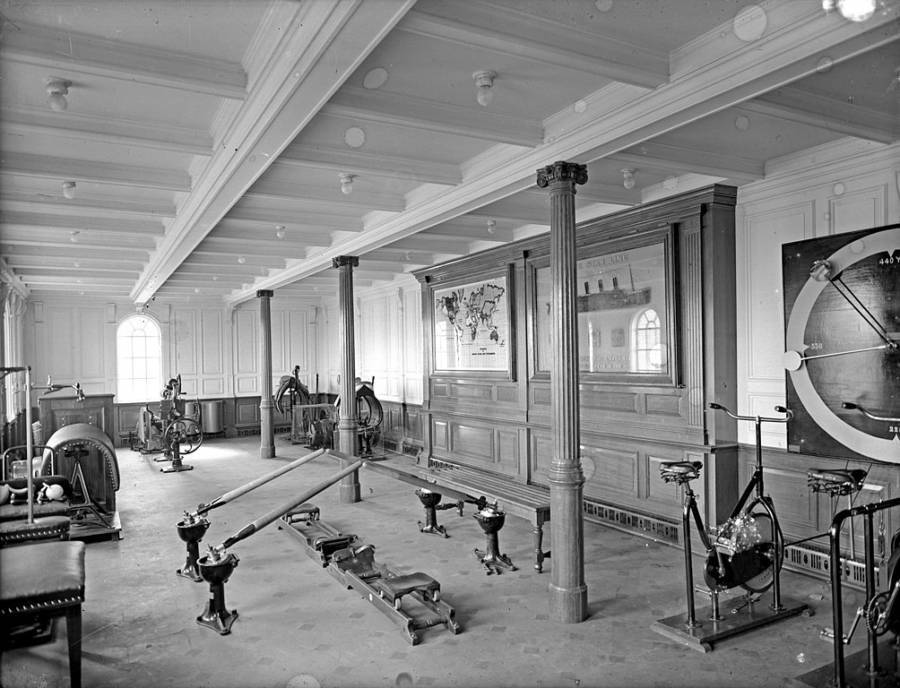
The ship was back on its way, if slowly, within minutes after the accident, and Engineer Andrews and Fourth Officer Boxhall had already gone below to check out the damage to the hull. However, Captain Smith had to immediately bring the ship to a halt once more because he had spotted a minor list to starboard, towards the direction of the crash. Andrews and Boxhall both echoed this unfavorable interpretation. While the mailroom was not positioned in the bilge but rather one deck above, both men saw that it had already begun to flood.
Crew members who made it through the deluge acknowledged its catastrophic extent; they could do nothing to halt it. The officer and the engineer made it back to the bridge at about midnight and briefed Captain Smith on the situation.
Their investigation revealed an unavoidable truth: water seemed to be entering the ship throughout its entire third, or around 200 feet. No one had ever heard of something like this happening, and no one could have ever predicted it. The forward holds aren’t the only ones having issues; boiler room 6 and, to a lesser degree, 5, were leaking as well. Six of the ship’s 16 watertight compartments were leaky, making the ship less seaworthy. By estimating the amount of saltwater already on board and the amount of time that had passed since the crash, Andrews was able to do a rapid computation. He reasoned that if the hole was more than one square meter, then the whole structure must have been compromised. Although it seems modest, this opening lets in seven tons of water each second.
While that was happening, the ship’s pumps could only remove around half a ton. The watertight bulkheads don’t even go above the E deck, which was a major flaw. While this setup has since drawn criticism, it was once the norm aboard cruise ships. Once again, no one foresaw the possibility of such severe damage to a steel hull.
The Titanic is sinking
The sinking of the Titanic was an extremely rare occurrence. It’s unlikely that the tragic conclusion would have been different if the watertight bulkheads had been elevated to a greater height. The Titanic did manage to remain afloat with just four of her compartments flooded, but on this April night, all six were submerged. A mathematical certainty, for Thomas Andrews as well as Captain Smith and his officers, the Titanic was doomed to go down. Andrews continued his calculations and concluded that she would sink in about two hours.
The Titanic’s gash in the hull has been the subject of much speculation. There was a section of the wreck where it had been found, but it had become so entangled in the muck on the ocean bottom that it was unreachable, even to the bathyscaphes who came to study it on occasion. A continuous rip had been postulated for a long time, but it seems unlikely that it could have been so wide since its surface can be approximately derived from the pace of flooding. In his 1987 book, Robert Ballard discusses various alternative theories, but it was not until a decade later that echo soundings made it possible to decide. Five or six large holes in the hull were found, matching the sinking data in terms of position and total area.
While the “how” may appear settled owing to a lack of more direct observations, the “why” remains highly contentious. The theory that low-cost materials were used to construct the Titanic was widely held for a long time. Plates of steel 25 mm thick were used for the hull, and it was speculated that they would become fragile in cold weather.
The results of 1994’s testing on surface-retrieval samples have been viewed in two ways: by some, they confirm this notion, while by others, they fail to demonstrate the steel’s extreme brittleness. Some more modern writers have put the blame on the riveting rather than the hull itself. Steel was used for the rivets that secured the hull plates in the ship’s center, whereas wrought iron was used for the rivets in the front and back. Recovered and tested samples of these rivets revealed a high concentration of slag, which was enough to significantly impair their tensile strength.
The fact that the holes in the hull were right on the riveting lines between the plates provided further support for the theory that the rivets had failed. However, there was still debate regarding how this information should be interpreted. Others incorrectly concluded that the Titanic’s flimsy rivets proved that the White Star Line had utilized subpar materials in her construction. There were many who claimed that the corporation picked wrought iron rivets not because they were cheaper but because they were readily accessible.
However, others have pointed out that the state of the crash and the Olympic’s career, which extended until 1936, do not support the theory that the rivets or the hull were brittle; this includes Gérard Jaeger, who had been a vocal critic of these hypotheses. In truth, the Titanic’s sister ship, the Olympic, collided with three vessels (the Hawke in 1911, a German submarine in 1918, and a lightship in 1934), severely injuring the first and destroying the other two, with no visible signs of weakness in its component elements.
The long sinking of the Titanic
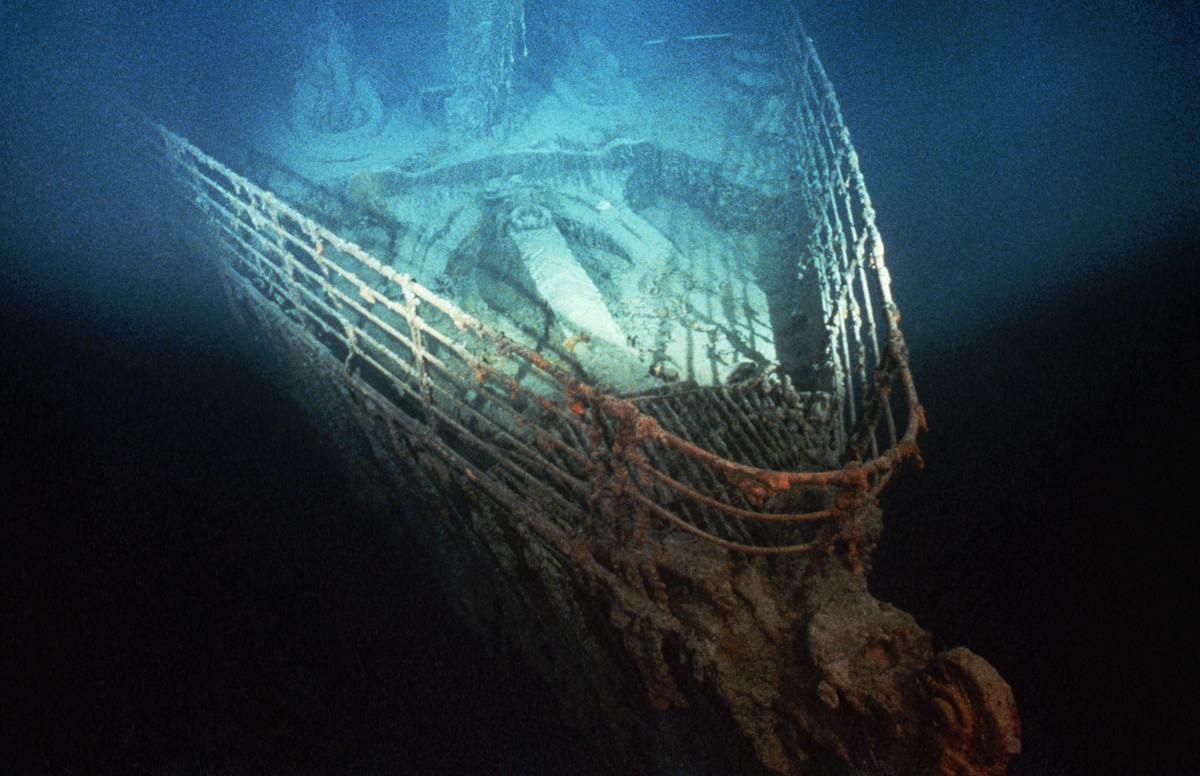
No matter what exactly caused the fatal injuries on the Titanic, the result was all too familiar. The bow section of the ship slowly but steadily sank into the placid sea. An hour and a half later, the flooding had reduced and the ship’s tilt seemed to have stabilized. The Titanic seemed to be floating to an untrained eye, but Thomas Andrews knew otherwise.
The damaged areas had been completely flooded as a consequence of the breach. The sea would keep pouring over the watertight bulkheads, flooding the next compartment, then the one after that, and so on.
The machinists in the boiler rooms did not stop working until the very end. There were some who remained at their places as long as possible to keep the ship’s power on, and there were others who turned off and vented the boilers that were going to be flooded to prevent them from exploding when they came into contact with the freezing water. There wasn’t much hope for these guys to make it out of the water alive.
The abandonment of the ship
Just after midnight, Thomas Andrews wrapped up his talk. Because of him, Captain Smith had no option but to issue an order for the ship’s abandonment. Caps were removed from all 16 longboats, and 4 inflatable rafts were made ready for departure. A simple calculation showed that more over a thousand passengers were going down with the Titanic, given that their entire capacity was 1,178.
This was an incredible turn of events, and it could only have been made possible by the arrival of a miraculous ship that enabled the rescue of additional people. First Officer Murdoch was responsible for filling and deploying the lifeboats on the starboard side, while Second Officer Lightholler was in charge of doing the same on the port side. Life jackets were handed out on the boat deck and promenade deck as stewards woke guests and informed them of the need to depart ship. At 12:25 a.m., when the first people boarded the boats, the evacuation itself started.
Women and children were expected to board the boats before men, as was customary in the maritime world. This custom dates back to the 1852 sinking of the HMS Birkenhead, a Royal Navy troop ship, off the coast of South Africa. To prevent a panicked rush, the troops were ordered to wait to board the lifeboats until all of the citizens had boarded and taken their seats. This order was carried out with deadly and inflexible discipline. However, aboard the Titanic, Murdoch and Lightholler had divergent views on how to apply this tacit regulation.
Murdoch reasoned that after the ship’s female and juvenile passengers had been removed, males could embark. The second remained unyielding, conceding only that some crewmen be detached to the canoes to aid with the handling. The upshot was that the starboard vessels with odd numbers were often more packed than their port counterparts.
A chaotic evacuation
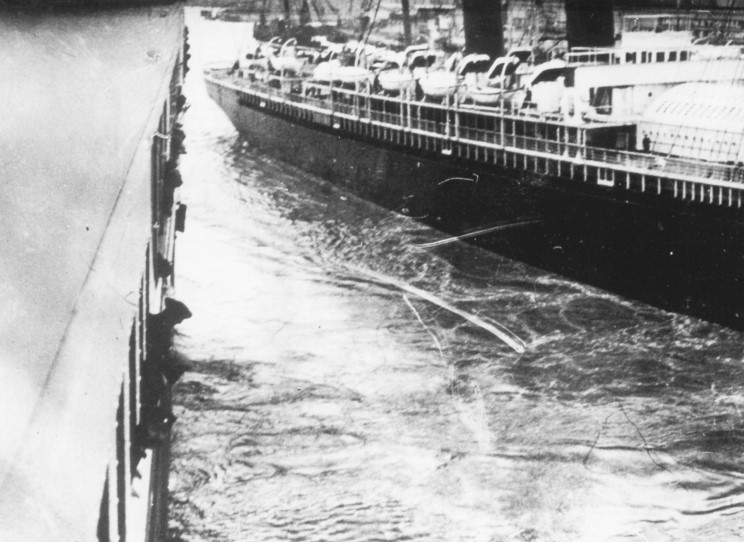
The evacuation was hampered by other events. First, there were no pre-departure safety exercises. This was suggested but not required under British rules. Nearly all of the crew had signed on in Southampton, and almost none of them had a clear idea of what their job would be in this situation. Even those who volunteered to man the lifeboats lacked the necessary skills, with some not knowing how to row. In addition, the freshly painted davits proved to be difficult to handle.
The passengers were hesitant to abandon the ship, which didn’t seem to be sinking quickly, in favor of a cramped and cold lifeboat. The evacuation was rather orderly but ineffective. When approximately 700 passengers boarded the boats, their maximum capacity was reached. None of the boats were completely full before they set sail; boat 13 was only about two-thirds full, while boats 1 and 12 were about a third full. Only as the evacuation neared its conclusion did the number of passengers increase, as they knew there would soon be no more available seats.
It is often held that the crew’s policy of not allowing third-class passengers to approach the lifeboats until first- and second-class passengers had boarded was a tragic act of discrimination against them. Casualty count data provides direct proof of this.
Third-grade panic
Unlike the “just” forty percent of fatalities among the first-class passengers, three-quarters of the third-class passengers perished in the sinking, a number equivalent to that of the crew. Some workers at White Star were known to be excessive, but it’s likely that no company-wide directives encouraged this behavior.
Because they were housed on the lower decks and had to navigate the ship’s stairways and hallways, third-class passengers were mostly victims of their social class. On the other hand, the first-class rooms were conveniently located near the ships. Moreover, many of these low-class travelers were immigrants who spoke little to no English. Many passengers had trouble understanding the stewards’ explanations. How many of them didn’t know the ship was going down until water started pouring into their rooms or dorms?
Some of them presumably went down dead ends or got stuck behind closed gates since there weren’t any directions or signs showing access to the exits. It was likely that not all of the stewards in charge of the class had the time or the foresight to open the ship’s many such doors, which served to demarcate the area allotted for each.
It took about 1.5 hours for all lifeboats to be lowered into the ocean after filling. There was a wide variety of mini-dramas unfolding between the two, from the heroic to the ridiculous. Even more of them would be lurking about the remainder of the wreckage. These occurrences, some of which were widely known and others less so, were part of a mythology that subsequent fiction and legends have embellished. “A hero is no braver than an average man, but five minutes braver,” Ralph Waldo Emerson once said.
The Titanic would, as expected, remember its heroes and forget the regular men and women whose only sin was to act on their impulses to survive a few minutes too soon.
Calls for help
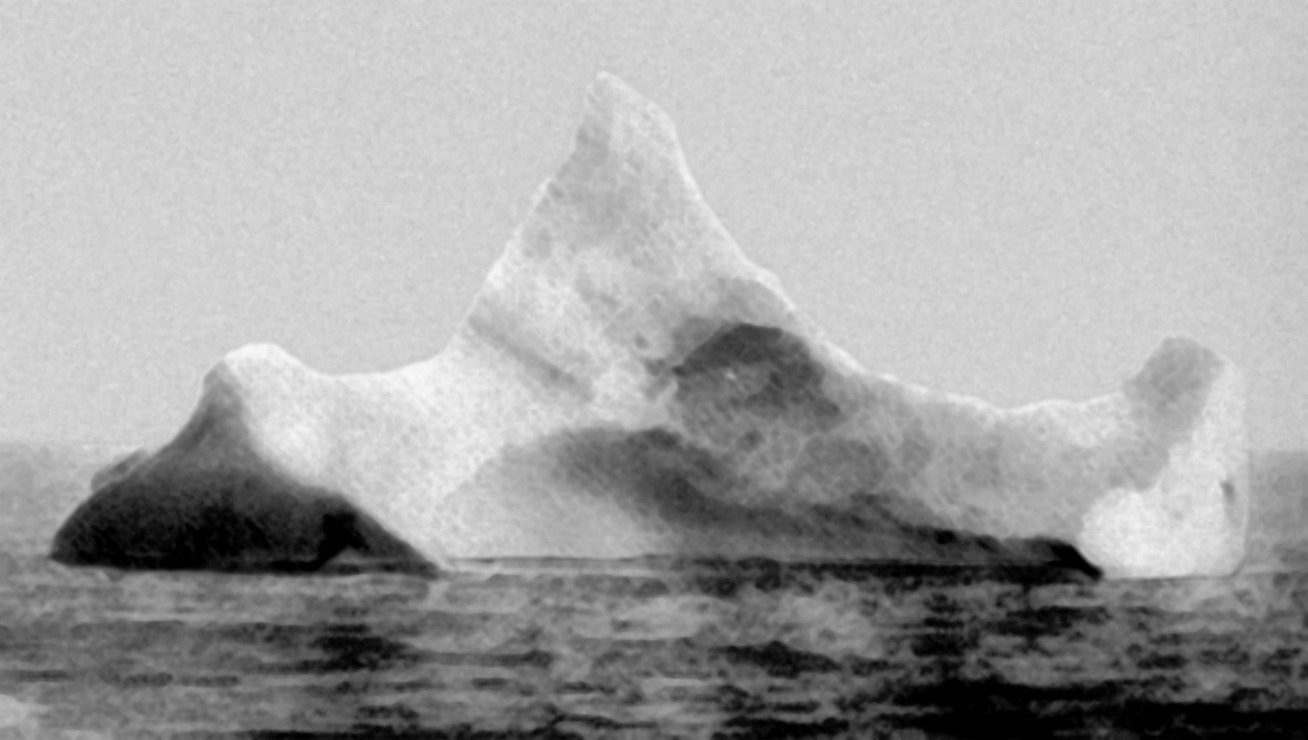
Captain Smith and his other officers feverishly sought to get in touch with ships that may be able to aid the Titanic, while Lieutenants Murdoch and Lightholler led the evacuation operations. His first order of business after issuing the order to leave the ship was to instruct radio operators Harold Bride and Jack Phillips to issue distress calls. Since this was wireless telegraphy and not direct speech communication, the two workers at Marconi did so instantly, in Morse code.
While “SOS” has been the standard worldwide distress call since 1908, Marconi still uses the older “CQD” signal. Titanic’s call sign MGY sent out the distress signal “CQD-MGY,” which was later followed by the addition of “SOS” after the message had been carried for almost two hours. Although it may have been the first of its sort to be transmitted by a ship, contrary to what we sometimes hear, other ships had earlier delivered similar messages.
The Titanic’s distress call was picked up by the Cape Race radio station on Newfoundland’s southeastern point and sent to nearby vessels. Several ships were quick to respond, but none of them were close enough to the Titanic to hope to rescue her within two hours. When it came to White Star’s major competition, the Cunard Line’s RMS Carpathia under Captain Arthur Rostron was the closest. The latter responded quickly to the emergency cries, but it turned out that it was about sixty miles from where help was needed. The Carpathia’s greatest speed was just approximately fourteen knots, which meant the trip would take roughly four hours. However, Rostron decided to steer the ship directly at the Titanic.
It’s safe to say that the passengers on the “giant of the seas” who had been struck to death were at first tranquil, but they eventually became confused. Officers were yelling instructions above the roaring sound of the steam being released from the boilers through the stacks. Boxhall, the ship’s fourth officer, rapidly determined the location of the vessel so that the radio operators could communicate it; he found that the ship was located at 41° 44′ north latitude and 50° 24′ west longitude. Unfortunately, Boxhall messed up the coordinates by around thirteen nautical miles in his hurry. Many wreck searchers made the same mistake until the Titanic was located in 1985, at which time the true coordinates were determined to be 41° 46′ North, 50° 14′ West.
As a result of this disparity, several debates arose concerning other ships that were far closer to the Titanic than the Carpathia and may have made it there in time. Concerning a mystery ship that several Titanic passengers and crew members claimed to have seen as the lifeboats were being lowered ranks among the most terrifying accounts.
All the officers who saw it, including Captain Smith, agreed that it was just a few miles away. Smith blasted her with white distress flares and ordered Morse searchlight contact to be established. However, all of that work was for nothing. At around two in the morning, the mysterious “ghost ship” seemed to gently leave, then vanish. Did such a thing ever exist?
A greeting that does not come
The Californian, a Leyland Line steamer, was widely believed to be the culprit both immediately after the accident and in the decades that followed. The Californian, on its way to Boston, “stumbled” across a big floating ice field at about 10:20 p.m. Stanley Lord, the ship’s captain, decided it was too risky to try to navigate the ship through the night when it was in the middle of such a formidable impediment.
The lone radio operator on board sent a warning to the other ships, but he was cut off by one of the Titanic’s operators, who was trying to get through the backlog of messages that had collected throughout the journey. Just 10 minutes before the Titanic smashed into the iceberg, at around 11:30 p.m., the Californian’s radio operator shut off his equipment and went to bed.
This was a tragic turn of events, considering the Californian was likely just twenty miles north of the Titanic. Could this ship have been the one spotted by the sinking cruise ship? Two of the ship’s seamen would attest that this is the case. During their watch, they noticed a brilliantly illuminated ship to the south, and they would later tell commissions of inquiry investigating the disaster that the ship seemed to be in distress and was shooting white flares. They said they alerted their leader, Lord, but he said he couldn’t remember that.
To his knowledge, the next watch, which saw the flares at about 3:30 a.m., would be the only one to report them to him. It was quite likely that these were the flares that the Carpathia, which was on route to the disaster site, shot to alert the survivors. The Californian did not find out about the Titanic’s sinking until 5:30 a.m., and it did not arrive at the site until 8:00 a.m., by which time the Carpathia had practically completed retrieving the survivors.
Investigators and the media, however, credited the two sailors, and Lord’s image was forever stained by the allegation that he had disregarded the Titanic’s cries for assistance. However, there were considerable discrepancies in the two sailors’ descriptions of what happened aboard the Californian. For instance, they said that they saw the iconic white flares until 2 a.m., despite the fact that other Titanic survivors testified that they were not fired after 1:30 a.m.
Neither of the two eyewitnesses mentions the searchlight the Titanic’s officers were using to attempt to establish communication with the unknown vessel they believed they were sighting at the same moment. Last but not least, the location of the Californian was almost certainly known, and it was extremely unlikely that she was located less than twenty miles from the Titanic—a distance much greater than that estimated by the witnesses on the liner—which makes it very unlikely that the two sailors on the Californian described the ship they said they saw in such great detail.
Gerard Jaeger speculated that the “ghost ship” wasn’t the Californian but rather the Samson, a Norwegian vessel contracted for seal hunting. The Samson would have been in the area of the tragedy on the night of April 14–15, 1912, according to the testimony of its first mate, which was not made public until 1962. Only a few kilometers away, the Norwegian sailor and his crew would have seen the position lights of a ship unleashing white rockets.
Samson was hunting without a license and without a radio. The Samson’s skipper, suspecting that a customs ship was attempting to board him, quickly sped away. A white flare may have meant anything to a ship at the time, from a signal of distress to a request to slow down.
At first, though, this story was met with skepticism. Verifications showed that on April 20, the Samson was expected to be docked in Iceland, making it very unlikely that she had been anywhere near the Titanic five days earlier. Because of this, the testimony of the Norwegian sailor was widely disregarded for a considerable amount of time as completely fantastical.
In 1999, researchers dug further and found that the Samson was supposed to arrive in Iceland on April 20 but didn’t show up there until May 14; this allowed her to get close to the Titanic as it sank. It was not feasible to determine with absolute confidence that the Samson and the “mystery ship” were the same thing. Also, it was hard to rule out the possibility that the Titanic’s crew and passengers, who claimed to have seen the illustrious vessel, were not just wrong. Human testimony was known to be unreliable, but given the circumstances, we can’t blame these individuals for being extra cautious and mistakenly believing that what they wanted to hear was the truth.
The end of the Titanic and the beginning of a legend
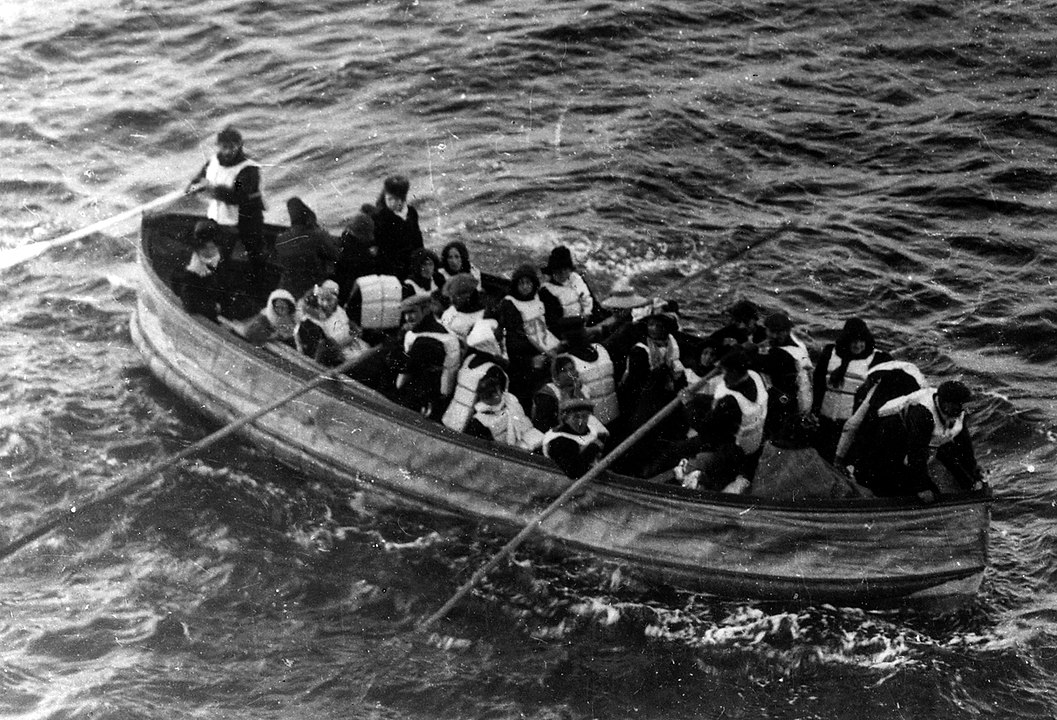
At 12:45 a.m., the first of many lifeboats was released, and an hour later, the last one. Meanwhile, tensions on board had grown to the point that COO Henry Wilde issued an order for the officers to get their revolvers. Around 1:30 a.m., as the last of the boats started to be loaded, a group of men attempted to assault boat number 14, prompting Fifth Officer Lowe to fire into the air to disperse them.
Lightholler had to use force to get some freeloaders off of the No. 2 boat so that the women and children could board, but even then there weren’t enough people to fill the boat. As soon as the final boat was launched, attention shifted to the four foldable rafts. The “D” could be released quickly, while the “C” needed additional preparation. At 2:05 a.m., following another commotion that prompted Commissioner McElroy to fire six rounds into the air, it, too, departed the Titanic.
However, navigating the “A” and “B” rafts proved considerably more challenging, since they were located on the bridge’s roof, underneath the number one stack. Simultaneously, the pace of flooding within the ship increased dramatically. The water had just rushed in through the open hatches and buried the forecastle, threatening to flood the ship’s superstructure. Finally, the massive bronze propellers at the ship’s stern were exposed and motionless.
Since there was no longer any chance of boarding a lifeboat, the bulk of the passengers still aboard the sinking ship began to go aft in a rather orderly fashion out of fear of drowning. Third-class guests, who were left to their own devices, were slow to return from the aft cabins. The ship Titanic was heading towards an unexpectedly quick demise.
The ship’s creaking and cracking were caused by strains it was not built to withstand, brought on by the hull’s increasingly steep forward tilt. In the tween decks, furniture begins to move, dishes to break. The water level under the bridge had finally risen to an unacceptable level. The time now was 2:15 AM. When Captain Smith proceeded to relieve the operators in the radio room, he did so with his feet in the water. The captain does the same for the officers and sailors working to release rafts A and B, and then he uses a bullhorn to order the lifeboats to remain near the ship so that he may rescue as many people as possible. He gave no more instructions after this. No matter how loud it sounded, the crewmen handling the lifeboats were too afraid to risk being swept into the sinking Titanic to actually carry out the order.
Every man for himself, both on and off the liner. No one would ever see Edward Smith again, and rumors about his fate would circulate indefinitely. Reports of a officer’s suicide were controversial, and Smith seems to be the only plausible suspect. Wilde, Murdoch, Lightholler, and Moody made a desperate attempt to launch rafts A and B; McElroy’s corpse was found after the shipwreck with no signs of gunshot wounds; and Lieutenants Pitman, Boxhall, and Lowe had abandoned the ship in command of a lifeboat.
Moments later, the Titanic nosedived sharply, and a massive wave flooded the bridge’s roof, knocking the men working on it into the ocean and releasing the resistant rafts. Almost immediately after that, the first chimney’s wires failed, and it toppled forward. The majority of the guys who the wave had submerged were killed as it crashed to the ground.
Second Officer Wilde, First Officer Murdoch, and Sixth Officer Moody all perished when they were either swept away by the water or crushed by the chimney, although Second Officer Lightholler just escaped with his own life. After a long struggle, the lieutenant and twenty other men, including radio operators Bride and Phillips, managed to climb onto rafts A and B, the former of which had begun to take on water while the latter had been completely overturned. Time, which had previously appeared to stretch on for minutes, would now have to be measured in seconds.
The sea’s weight quickly shattered the fine glass roof atop the first-class ship’s sumptuous grand staircase. After that, the water rushes in by the tons into the stairwell, speeding up the flooding of the ship even more. The propellers had risen completely out of the water, and the Titanic was now forming a terrifying angle with the surface of the water. Similarly, the second chimney gave in and fell.
Fearful people in the crowd desperately grabbed onto the ship’s stern as it rapidly ascends. There were those who slipped and fell, and there were those who deliberately threw themselves into the water. From the safety of the boats, the future survivors would watch the horror unfold before their eyes (or as much of it as they could bear) when they had the strength. The last passengers to use the first-class smoking area said they saw a man standing in the corner staring intently at a painting. There was no mistaking that he was Thomas Andrews for them. Was the designer of the Titanic aware that the Atlantic was about to swallow his creation? The only certainty was that the engineer would meet the same fate as his ship.
The ship continued to nosedive until it was nearly skewed at an angle of seventy degrees to the surface. Its raised stern caused groups of passengers to slide down and collide with the superstructure behind it. The survivors wouldn’t have to hear the horrible sound of shattered bones or see blood splatter on the white painted sheets if they were far enough away. The first boiler room, whose drivers and stokers had given their lives to keep the ship’s lights on, was flooded, and the lights flickered and then went out.
Between stacks 3 and 4, the Titanic’s hull was experiencing unbearable pressure. The aft movable joint, along with a large void for the aft stairwell and another for the steam engine’s 8 enormous cylinders, were present. With a deafening bang, the hull splits in half, and the remaining two stacks topple over. This flaw was not unique to the Titanic; indeed, no ship of any kind would have been able to withstand such pressures.
Odd as it may sound, it wasn’t immediately clear that the ship had broken in two; depending on where they were, none of the survivors of the sinking saw the ship break in two. Until the ship is found and verified to have sunk in two parts, this fresh illustration of the relative credibility of human testimony is sure to stir much debate.
Although the front part dove straight to the ocean floor, the back part returned almost horizontally for a few seconds before rising again, this time completely vertically. Ultimately, this was the curtain call. In only a short amount of time, the stern would be completely flooded by the incoming water. The blue flag of the Royal Naval Reserve was the last to go as a final tribute to Captain Smith. At 2:20 a.m., the Titanic was gone for good, never to be seen again.
Meanwhile, the story of the doomed ocean liner was exploding in the public consciousness. Due to the tragedy, the Titanic would have a legacy that was inversely proportional to how long it was in service. The combined weight of all the books, magazines, and newspapers written about her likely exceeds that of multiple ships of comparable size. This, however, does not explain the plethora of movies—both fictional and nonfictional—that have been made about her. At any rate, the survivors’ worst nightmare was not over on this chilly night in April of 1912.
The rescue of the shipwrecked Titanic
As the ship went down, the enticing whistle of steam being propelled from the boilers died away, but the sight of the disaster remained eerily still. Nobody was lost when the ship sank. Those who were saved from being dragged under the waves by its massive wake were clinging to the surface, exhausted from their ordeal. The boats were only about two-thirds full, yet they still dared not turn back to save the hundreds of struggling survivors.
Still, the noise wouldn’t last forever. A regular human being would only have a few minutes left to live in water that was close to freezing. The victims were so numbed by the cold that they fell asleep and never regained consciousness. Finally, a profound hush falls over the ocean.
The few returning boats would only return to save a select few by sheer chance or natural disaster, but only after the vast majority of the population had already perished. As for those on the boats, their horror was far from over. The shipwrecked lack everything. Others who had “drank the cup” and those who had not thought to bundle up before boarding the boats were subjected to brutally chilly conditions. Radio operator Jack Phillips was one of several who succumbed to hypothermia before they were rescued. Unfortunately, it became clear that the boats had insufficient provisions for their occupants. If it took too long to locate the lost sailors, they would suffer a death much more agonizing than either drowning or freezing to death.
All the ships that swung by to help the liner, but notably the Carpathia, gave their all. To ensure the safety of his crew, Captain Rostron took every precaution and even some risks in order to prepare for the rescue. Aboard his ship, he disabled the heating and hot water systems. His ship was able to travel at a speed of seventeen knots, an increase of three above its normal maximum speed, thanks to the energy he conserved.
He recklessly made his way across the ice field, scarcely slowing down even when he got close to the biggest icebergs. Rostron’s carelessness, had it resulted in another catastrophe, would have made him the last of the idiots, but luck was on his side, and the captain of the Carpathia would go down in maritime history as a hero.
In little more than three hours, his ship approached the presumed wreck site, where it discovered nothing but water and ice. The Titanic sank, but her passengers and crew still had a chance. Despite the Carpathia’s best efforts to alert rescuers with rocket shots, it wasn’t until 4 a.m. that the first lifeboats were discovered. At 8 a.m., when the first lifeboats arrived, the rescue operations had finally concluded. The search continued until 8 p.m., but all the boats were located. Approximately 700 people were rescued by the Carpathia and given medical attention and comforts like soup and hot beverages.
Coats and blankets were supplied by the rescue ship’s passengers as well. The morning light allowed some of the survivors to glimpse the remains of the dead, and in their honor, a memorial ceremony was conducted nearby. The Carpathia eventually left this dreary port for New York, but not before returning the boats to port. They may have served their purpose, but they were still the property of the White Star Line.
Investigating a tragedy
On April 18, the Carpathia was expected to dock. When word of the sinking finally reached the press the day after the disaster, it repeated the most baseless rumors. This behavior has not changed much. In a panic, the Carpathia sent out a radio call for information, but it wasn’t until the 700 survivors got off the ship in New York that the true toll of 1,500 fatalities was known. The dramatic facts in the news stories range from the heinous to the heroic, and amazement and anger were in equal measure. It was through time that the legend began to take form.
When the full scope of the disaster was understood, officials in the United States and Britain had to provide answers about the disaster’s development and what led to it. We need to learn from this catastrophe and hold the guilty parties accountable. After the Carpathia docked in New York, a congressional investigation was launched, with Michigan Senator William Alden Smith at the helm.
For this was, in a sense, the trial of the British merchant fleet, and its principal opponent was quite naturally the United States, and Smith conducted his hearings in an environment electrified as much by the outbursts of the press as by the economic and political stakes. Newspaper stories from witnesses, which were likely purchased at a premium and inflated to fit, only served to add to the chaos.
The U.S. panel met starting on April 19 and finished its work on May 23. Negligence and irresponsibility were placed at the feet of the crew, and in particular Captain Edward Smith, who was no longer there to defend himself. Not without irony, it also condemned the lack of rescue equipment, even though back then, nearly no transatlantic ship had adequate lifeboat space for all of its passengers.
Bruce Ismay, who apparently had the naive thought of saving his own life, was the focus of a vicious media onslaught once the findings of the American legislators were made public. William Randolph Hearst, publisher of the New York Post and a bitter foe of Ismay, was a key instigator. Ismay had already intended to quit the White Star before the catastrophe, but his image in the United States never recovered from the coverage he got in the press.
While the United States went all out to find those responsible, the British government exercised more restraint in their search. After all, the political issue in Britain was not to punish those responsible but rather to protect the honor of the British merchant navy, the White Star Line, and the Harland & Wolff shipyards. This was why the panel of investigators headed by Baron Mersey looked very closely at California’s part in the accident, or lack thereof.
To deflect blame from Ismay and Captain Smith, who were exonerated, the ship’s captain, Stanley Lord, was made a scapegoat. Even though the Mersey Commission’s official term ended on July 30th, its members did not neglect to quietly suggest legal reforms to the Commerce Department.
In the end, these recommendations paid off because the authorities at least had the common sense to draw the logical conclusions from the Titanic disaster. Finally, passenger ships were obliged to have a minimum number of available seats in their lifeboats and to have working radios on board. At each crossing, the crew and passengers should practice an evacuation to ensure that everyone is prepared.
On top of it, in 1913, London hosted an international conference. There is now a mechanism in place to identify and notify the existence of icebergs, and the route of transatlantic trade has been shifted farther south. Safety on board the liners, which remained the primary mode of transatlantic transit for many decades after the sinking of the Titanic, the deadliest of all maritime tragedies, was greatly improved. The cost, however, was quite high.
Aftermath of the Titanic disaster

On April 20, 1912, the Mackay-Bennett set sail from Halifax, Canada, with her crew contemplating that very price—the human price. White Star Line hurriedly rented the cable ship, which was transformed into a floating mortuary, with the horrific goal of retrieving the corpses of the victims. The sight of scores of bodies floating in the seas, still bound together by their life jackets, was a grim reality for the sailor-thanatopractors who had arrived on the site of the catastrophe. Mackay-Bennett was unable to complete its job because of a lack of embalming supplies.
After them, three other ships arrived, but they fared much worse. A total of 328 corpses were recovered, and 119 of them were weighed down and buried at sea due to extensive injuries or because they were members of the crew or third-class passengers. Those who boarded the Titanic were an uneven group in life, and their deaths reflected it. All the others were either reunited with their relatives or given a proper burial in Halifax. The last one, a nineteen month old boy, will be identified only in 2007.
The sinking of the Titanic did not spell the end of the Olympic class or of the oceanic giants, but it did cause shipbuilders to exercise more caution. The November 30, 1911-launched Gigantic underwent extensive redesign and received the somewhat more modest name Britannic before continuing to be built. As a result of these alterations, progress had slowed by the time World War I erupted.
With its modifications complete, the Britannic entered service as a hospital ship in 1915. On November 21, 1916, she had been in service for a little over a year when she was sunk by a mine in the Aegean Sea. By strengthening its watertight bulkheads, the ship was able to remain afloat long enough for most of its passengers to be rescued, and thirty lives were lost in all. However, this new drowning added fuel to the fire that the Olympic class was cursed due to the numerous accidents that plagued the only survivor’s career, the Olympic.
The Titanic’s short history has been the subject of much study by historians and first-hand accounts from survivors throughout the years. Both helped solidify the incident in people’s minds and promulgate a narrative about the ship that variously highlights, stigmatizes, or glosses over certain points in its past. It’s also clear that people care about the background details of major events. Though isolated incidents in the grand scheme of things, these stories have the tremendous virtue of putting a human face on a catastrophe that claimed the lives of 1,500 people.
On the other side, legend, whether it be a dark one or a golden one, is typically intertwined with history. Generally speaking, the human mind prefers the straightforward and is not very forgiving of ambiguity. Thus, Bruce Ismay was more easily remembered as a coward, forgetting the stories of the women passengers he feverishly encouraged to get into the lifeboats; Thomas Andrews was more likely to be remembered as a man who bravely accepted to go down with his creation than as a man who was prostrate and unable to react to the catastrophe around him; and James Lightholler was more likely to be remembered as a brave man than as a stubbornly obtuse officer who stubbornly refused There is no limit to the number of possible instances like this.
In this regard, the Titanic disaster was similar to a classical tragedy in that it served as a moralizing and cathartic experience for its audience. The same trinity of location, temporality, and causality holds true. After its demise in 1912, this floating representation of Western culture could not help but inspire efforts to make it a symbol. The 1955 novel by Walter Lord, “A Night to Remember,” was considered a seminal work in the study of the Titanic disaster.
Even though he spread a lot of misinformation (to be fair, he didn’t have as much evidence as we do today), Lord often stressed the concept that Western culture was to blame for its own demise because of its gluttony, arrogance, and lack of awareness. Since then, the misconception has persisted, with the Titanic being held up as a symbol of humankind’s reckless, haughty, and arrogant character and its supposed triumph over vengeance, despite the absurdity of such a personification.
Maritime safety is in question
The recent disaster of the Costa Concordia on January 13, 2012, raised the issue of whether such a harsh wake-up call was not essential to rouse the slumbering vigilance of an overconfident society. The North Atlantic disaster a century ago has been brought to our attention. Were the lives of those on board the Titanic lost for nothing? It’s doubtful unless we’re ready to compare the overall effects of the two disasters. More than 4,000 passengers and staff were aboard the Costa Concordia, although only 32 were killed. This compares to 1,500 out of 2,200 on the Titanic.
Given the terrible circumstances under which the evacuation took place, this was a compelling indication of the advances gained in marine safety over the preceding century. Plus, the captain of the Costa Concordia was obviously less cautious than Captain Edward Smith was on the evening of April 14, 1912, even if he had not yet been punished for his actions. When comparing the Italian liner disaster to the White Star Line transatlantic disaster, it seems more likely that the former could have been averted.
A caveat from below the surface was required to round out this summary. Since its discovery in 1985, the wreck of the Titanic has been the subject of rigorous research that has added much to our understanding of the ship, her career, and her conclusion. The tale of the ruin’s discovery was just as intriguing as the ship itself. It was also contentious due to the fact that its presentation, which veers between blatant exploitation and reverence for a mass burial, may easily offend. Even though the Titanic has been lying at the bottom of the sea for a century, it won’t stay there forever; with each passing year, the ship will fade away into nothing.
Bibliography:
- McCarty, Jennifer Hooper; Foecke, Tim (2012) [2008]. What Really Sank The Titanic – New Forensic Evidence. New York: Citadel. ISBN 978-0-8065-2895-3.
- “Passenger List and Survivors of Steamship Titanic“. United States Senate Inquiry. 30 July 1912.
- Lord, Walter (1987). The Night Lives On. London: Penguin Books. ISBN 978-0-670-81452-7.
- Lynch, Donald (1998). Titanic: An Illustrated History. New York: Hyperion. ISBN 978-0-786-86401-0.
- Eaton, John P.; Haas, Charles A. (1987). Titanic: Destination Disaster: The Legends and the Reality. Wellingborough, Northamptonshire: Patrick Stephens. ISBN 978-0-85059-868-1.
- Mills, Simon (1993). RMS Olympic – The Old Reliable. Dorset: Waterfront Publications. ISBN 0-946184-79-8.


